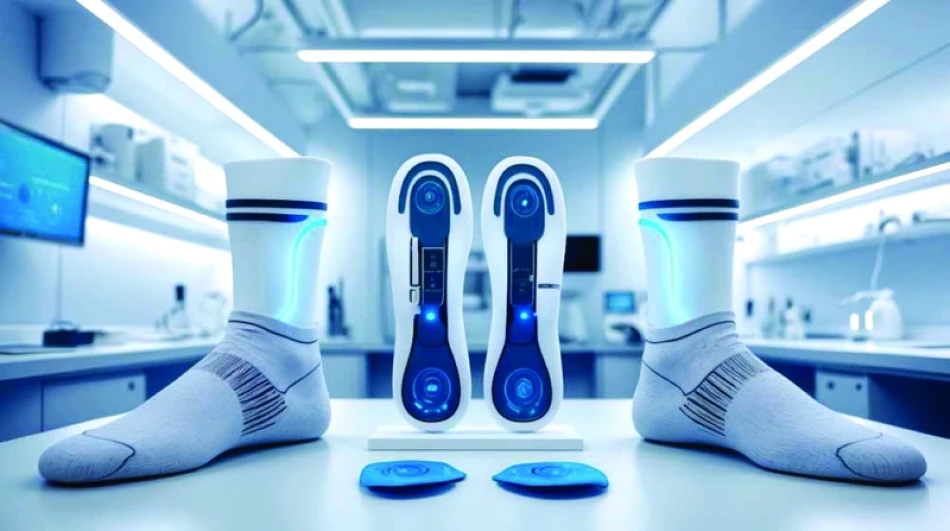
Khalifa University Researchers Leverage Smart Tech to Treat Diabetic Foot Conditions
UAE Researchers Pioneer Smart Wearables to Prevent Diabetic Foot Amputations
A groundbreaking collaboration between Khalifa University and Sheikh Shakhbout Medical City in Abu Dhabi has developed advanced wearable technology that could revolutionize diabetic foot care, potentially preventing thousands of amputations worldwide. The research combines AI-powered sensors, smart materials, and real-time monitoring to shift treatment from reactive wound care to proactive prevention.
The Global Diabetic Foot Crisis
Type 2 diabetes represents one of the world's fastest-growing health challenges, with diabetic foot complications among its most devastating consequences. The statistics are sobering: over 85% of diabetes-related foot amputations globally stem from foot ulcers, with recurrence rates reaching 65% within five years of initial treatment.
These complications typically progress from minor tissue damage to severe ulceration, infection, and ultimately amputation in advanced cases. The condition is particularly insidious because diabetic patients often cannot feel developing injuries due to nerve damage, allowing small problems to escalate into major medical emergencies.
Revolutionary Monitoring Technology
Multi-Parameter Sensing Systems
The UAE research team focused on creating comprehensive monitoring systems that track multiple risk factors simultaneously. Their wearable devices measure mechanical pressures including plantar foot pressure and shear forces, alongside physiological indicators crucial for wound healing such as temperature, humidity, microcirculation, and skin pH levels.
This multi-parameter approach represents a significant advancement over traditional monitoring methods. Shear forces, in particular, can cause microscopic tissue damage that patients cannot detect due to diabetic neuropathy, making continuous monitoring essential for early intervention.
Smart Footwear and Integrated Systems
The technological innovations include sensor-equipped shoe insoles that monitor pressure distribution patterns, smart socks measuring temperature and humidity fluctuations, and integrated systems capable of sending real-time alerts to both patients and healthcare providers through smartphone applications.
Some devices incorporate therapeutic features such as red light therapy or temperature regulation to actively promote healing processes, moving beyond passive monitoring to active intervention.
AI-Driven Predictive Healthcare
The integration of artificial intelligence transforms raw sensor data into actionable medical insights. AI algorithms analyze patterns from wearable devices to improve predictive models, potentially identifying ulcer development days or weeks before visible symptoms appear.
Combined with 3D printing technology, the system enables creation of personalized insoles designed to optimize pressure distribution for each patient's unique foot structure and risk profile. This personalized approach could significantly improve prevention outcomes compared to one-size-fits-all solutions.
Market and Healthcare Implications
Economic Impact on Healthcare Systems
The financial implications are substantial. Diabetic foot complications cost healthcare systems billions annually, with individual amputation procedures and subsequent rehabilitation reaching tens of thousands of dollars per patient. Preventive wearable technology could dramatically reduce these costs while improving patient outcomes.
The global diabetic foot ulcer treatment market, valued at over $7 billion annually, could see significant disruption as prevention-focused technologies gain adoption. Early intervention through continuous monitoring may reduce treatment costs by 60-80% compared to traditional reactive care models.
Telemedicine Integration
The research emphasizes remote healthcare capabilities, allowing continuous patient monitoring without frequent hospital visits. This approach aligns with global healthcare trends toward decentralized care delivery, particularly relevant in regions with limited healthcare infrastructure or during pandemic-related restrictions.
Global Context and Competitive Landscape
The UAE's investment in medical technology research positions the country alongside other innovation hubs like Singapore and Switzerland in developing next-generation healthcare solutions. This research builds on the Emirates' broader strategy to become a global leader in AI and healthcare technology.
Similar initiatives in the United States and Europe have focused primarily on glucose monitoring, making the UAE's comprehensive approach to diabetic complications particularly noteworthy. The integration of multiple sensing modalities with AI analysis represents a more holistic approach than most competing technologies.
Future of Diabetic Care
The combination of real-time monitoring, personalized intervention, and remote healthcare capabilities could fundamentally transform diabetic foot care from reactive treatment to proactive prevention. Success in clinical trials and commercial deployment could establish new standards for diabetic complication management globally.
This technological advancement represents more than incremental improvement—it offers the potential to prevent thousands of life-altering amputations while reducing healthcare costs and improving quality of life for millions of diabetic patients worldwide.
Most Viewed News

 Sara Khaled
Sara Khaled






